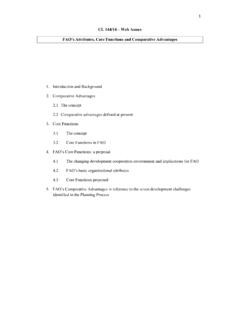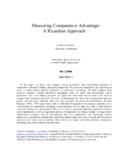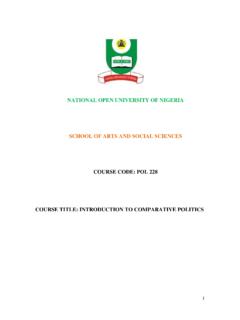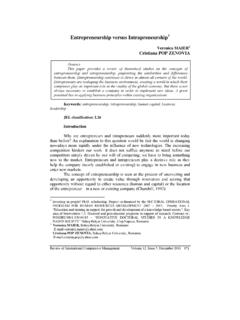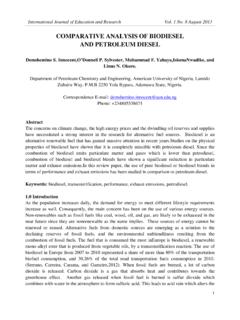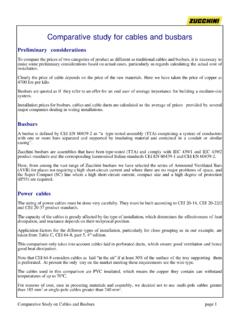Transcription of New Refractory Technology Provides Advantages …
1 New Refractory Technology ProvidesAdvantages in Monolithic RefractoriesThere have been a number of different Refractory binder systems introduced and utilized over thelast 100 years. The most long-standing systems, and the ones employed through today, are basedon aluminous cements or phosphates and water that chemically combine to form hydrates, whicheventually harden. These traditional systems have limitations that Refractory consumers have hadto take into consideration when using Refractory monolithics. Stellar Materials developed and patented an aggregate binder system that eliminates most of thelimitations of traditional systems. It is sold under the brand name Thermbond.
2 The John ZinkCompany LLC is an exclusive distributor of this unique line of Refractory Binder SystemsThe most popular traditional Refractory binder systems currently in use are: Calcium aluminate cement and water Phosphoric acid and reactive alumina Dry phosphates and waterHigh purity calcium aluminate cement combined with water is a very popular Refractory aggregatebinder system. When the cement and water are combined a reaction takes place that eventuallyhardens the monolithic Refractory . Under normal ambient conditions, the reaction or set time forthis binder system is 24 hours or longer. After the Refractory hardens it has moderate strengths inthis green state.
3 This limitation makes the Refractory vulnerable to mechanical damage and caremust be taken in handling the Refractory . Prior to being put into service for the first time, refractories using this binder system must be firedin, or brought up to operating temperature, very carefully because of the existence of mechanicalwater in the hardened Refractory . If the hardened Refractory is heated very rapidly too muchmechanical water is converted to steam which can t escape from the Refractory fast enough. Sincesteam occupies 1000 times more volume than the water it was converted from, the excess steamwill rupture and spall the hardened Refractory . Lengthy and expensive heat-up procedures arerequired to prevent this dangerous phenomenon.
4 Finally, the calcium aluminate cement and water binder system has no bonding characteristics andrequires mechanical means of support to keep it in place when used to repair existing refractorylinings. There is no reaction between the new Refractory being placed and the existing lining whichwould bond the two structures together. Placing new Refractory over old will normally result indelamination when the refractories are heated and put into second traditional binder system is phosphoric acid and reactive alumina. This system combinesphosphoric acid and reactive alumina to form a bonded aggregate structure with very stableproperties. This binder system is typically found in plastic refractories.
5 Since this system lacks acement component that hardens at ambient temperatures, it has no green strength. Until therefractory is fired to at least 600 F, it has no strength, and is susceptible re-hydration. One advantage of not having the cement component is this binder system has no set timerequirements and formwork is not always required for placement. The plastic consistency allowsyou to contour the lining to the desired shape by ramming the Refractory into place. There are numerous disadvantages to this binder system. While no set time is required, thebinder system has a considerable amount of mechanical water associated with it so a lengthy anddeliberate heat-up schedule is required to fire the Refractory in.
6 Once fired-in, the phosphoric acidand reactive alumina binder system loses a considerable amount of strength at operatingtemperatures above 2500 binder system has no ability to bond to existing fired refractories. In addition extreme caremust be taken on initial placement to insure the Refractory is properly knitted together. If notplaced properly, laminations can occur resulting in an inferior third traditional binder system is dry phosphate and water. This system relies on dryphosphates, mixed in with the Refractory aggregate, to dissolve in water, react, and cause therefractory structure to system produces a Refractory that has reasonably quick set times and moderate greenstrengths because of the dry phosphate/water reaction.
7 At operating temperature this system willhave poor hot strengths. Bringing the Refractory to operating temperature with the dry phosphatebinder system also requires a deliberate heat up schedule because of the mechanical waterremaining in the Refractory mass. Without the proper heat-up schedule the potential for explosivespalling is very difficult to control the mesh size of dry phosphates and proper mesh size is an importantaspect of phosphate solubility. This complicates a process that is already difficult because, ingeneral, dry phosphates are difficult to put back into solution, especially under field reaction is also sensitive to impurities that may be present in the water used for mixing.
8 Withthe dissolution and distribution of phosphates within the mix erratic, physical properties are alsoerratic. Inconsistent cast, fired, and bonding characteristics of refractories using this binder systemtypically results. Thermbond Binder SystemA new binder system has been developed that is a hybrid of the traditional systems. TheThermbond binder system utilizes liquid phosphoric acid or Activator , calcium oxides, and otheringredients as the basis for the unique binder system. The Thermbond binder system waspatented in March 1999 under patent 5888292. When the liquid Activator and dry aggregate materials are mixed together a reaction takes placethat hardens or sets the Refractory in a very short time.
9 Once hardened, the Thermbond bindersystem develops extremely high green strengths within the Refractory structure. Because of thebinder Technology , the Refractory structure will also have good strengths at Thermbond binder system also has the ability to withstand very rapid initial heat-up. Thebinder system releases chemical water gradually, which dramatically reduces the risk of liquid phosphate or Activator is used in the binder system, the dispersal of phosphates iscomplete and uniform throughout the mix. This generates a mix with consistent qualities and givesit the ability to bond permanently to existing fired refractoriesCom parative Green Strengths050010001500200030 M in AfterCasting1 Hour AfterCasting3 Hours AfterCastingPSIC onventional C astableLow Cement CastableT herm bondThermbond Product CharacteristicsThe Thermbond binder system Provides Thermbond Refractory products with unique productcharacteristics not available in other refractories.
10 These unique product characteristics are: Rapid Mixing Fast Setting/Curing Fast Heat-up Capabilities Bonding Strength Thermal Shock ResistanceThe Thermbond Activator and dry bagged aggregate come in pre-measured components thateliminate measuring errors. Pre-measured components also ensure consistency from batch tobatch. The dry aggregate is added to the Liquid Activator and mixed for 45 to 60 seconds. The twocomponents blend together much more rapidly than traditional materials. Mixing Thermbond canbe done in paddle mixers, pan mixer, or with a bucket, Jiffler blade, and industrial drill. Once mixed and placed, an exothermic reaction begins that hardens or sets the Thermbond very quickly after placement.
